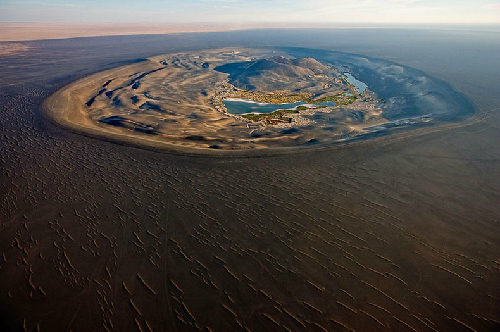The name “Waw an Namus” means “mosquito oasis” in the local language. That is because around this deadly, ash-filled basin, there are still small, cool pools of water with trees, attracting a lot of mosquitoes.
 |
| Panoramic view of "mosquito oasis". |
Since ancient times, the lakes around this crater have always been a source of fresh water and a peaceful resting place for weary travelers in the desert, on their journey from the city of Waw Al Kabir to the Al Kufrah oasis in southeastern Libya.
 |
| A lake that provides fresh water in the desert. |
The first images of the caldera were recorded by the civilized world by Karl Moritz von Beurmann and Gerald Rohlfs, although they had never visited the area, and only by satellite. It was not until a French soldier, Laurent Lapierre, was sent there on a mission that more accurate reports of the area were recorded.
About 11 years later, Italian geologist Ardito Desio arrived at Waw An-Namus on a long camel journey. During his geological expedition, Desio also visited Jalu, Maradah, Waw Al-Kabir, Tmassah and Kufra and published a geological description of the volcano for the first time in 1935.
 |
| Freshwater lakes and coconut groves dot the desert. |
Today, the unique green oasis, formed in the middle of the most arid and desolate place due to the destruction of desert sand winds and eruptions, has become a tourist destination. Tourists who choose Sahara desert tours always enjoy resting under the coconut trees, enjoying cool water in the blue lakes next to this large sand dune.


































